Recent Posts
-
It IS Happening Here
February 16, 2024
-
General Ludd to General Intellect
January 11, 2024
-
Temporal and Geographic Edges
December 26, 2023
-
The Root of All Evil
October 13, 2023
-
Post-Pandemic Melancholia . . . Same As It Ever Was?
September 3, 2023
-
Chronicle of Deaths Foretold
June 24, 2023
-
Reparations is the Least We Should Do
May 11, 2023
-
We Are Not Alone
April 9, 2023
-
War and Anti-War
February 22, 2023
-
For Full Enjoyment, Not Full Employment!
January 7, 2023
|
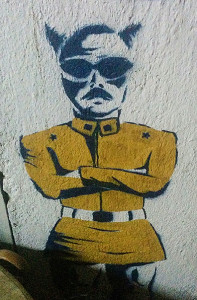 I found this stencil on the wall in a bike/vegan collective warehouse in Valparaiso. I had the great pleasure of visiting Chile from March 23-April 5. My host there was Ricardo Jerez, who gave me an amazing time, great hospitality, wonderful history and stories, and made sure I was well taken care of throughout my visit. Ostensibly I went to attend the World Bike Forum, and you can read my Talk here and my ruminations on cycling as they continued after my participation here.
I had a life-long interest in Chile because of the September 11, 1973 coup, fully backed by the CIA and the Nixon-Kissinger White House. At the time I was a high school student in Oakland (at Tech) and a regular listener to KSAN-FM (“the jive 95”), at the time still in the glory period of freeform FM radio. The news department anchored by Dave McQueen and Larry Lee was an amazingly subversive source of information (supplemented regularly by the hilarious work of Wes “Scoop” Nisker) and I remember well hearing about General Pinochet’s attack on the national palace in Santiago, and the death of democratically elected socialist president Salvador Allende as it happened on their newscast. By the time I was in college at Sonoma State College (now University) in Cotati/Rohnert Park in 1975 the Chilean solidarity movement was in full bloom, based largely on the dozens of Chilean political exiles that had arrived in the Bay Area since escaping the military dictatorship that was imposed in Chile.
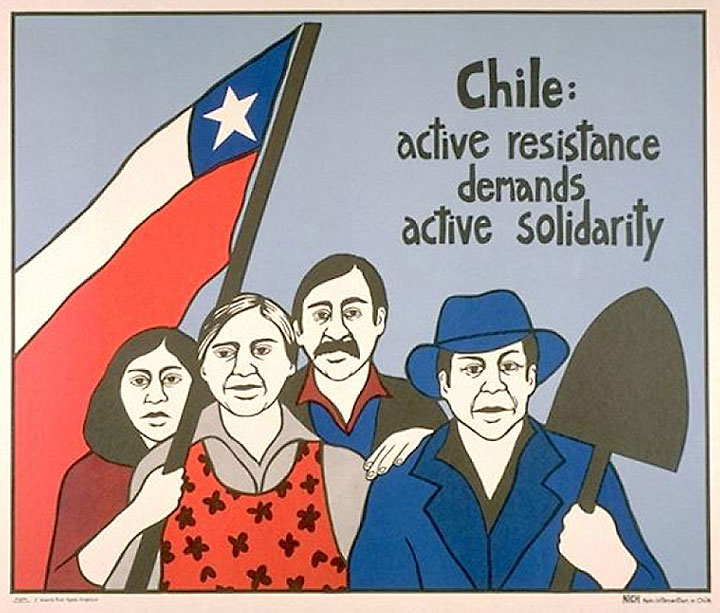
Poster by Lisa Kokin (1978), courtesy of Docs Populi
I learned a lot about Chile, the Allende period, the terror and barbarism of the Pinochet era, and participated in protesting the arrival of the “Torture Ship” Esmeralda when it sailed under the Golden Gate Bridge on a “goodwill” visit to the U.S. And I got a crash course in the “Left” when I found myself working with the Free Chile Center in San Francisco (largely full of supporters of Allende’s Popular Unity government) who were in endless conflict with the folks who founded La Peña in Berkeley (who were supporters of the MIR, the Movement of the Revolutionary Left, who had gone underground before the election of Allende and called for “arming the workers” as the antidote to the coming coup). The mid-1970s was a time when the bitter disputes between followers of the Communist Party and the Soviet Union and the growing ranks of those to their left seemed much more vital than they do in retrospect.
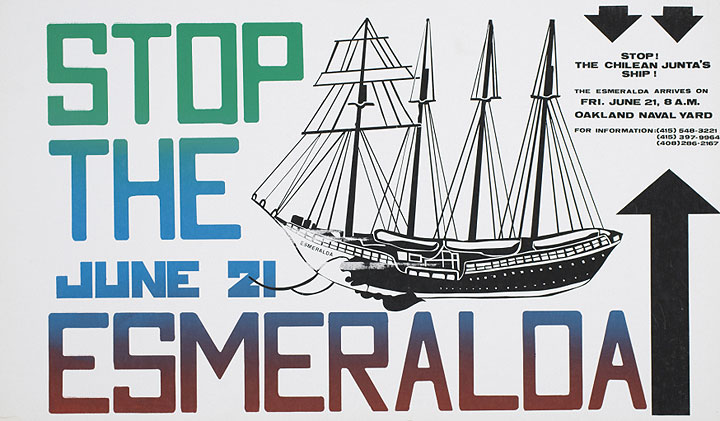
Poster courtesy of Docs Populi
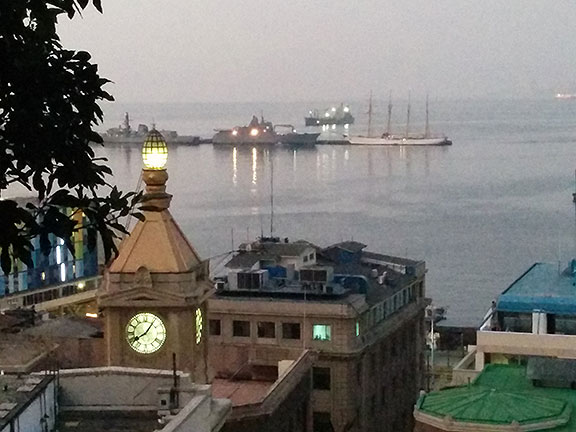 It was a bit jarring to come up on the Esmeralda docked at the Navy base that dominates the port of Valparaiso. This post will feature images from my tourism around Santiago. The next post will be focused on Valparaiso where I had the pleasure of spending a weekend and look forward to returning for a longer visit another time. In general my appetite for Chile was both satisfied and further whetted by this visit. I particularly want to visit regions to the south and north of the capital city and its nearby port (120 km) in Valparaiso.
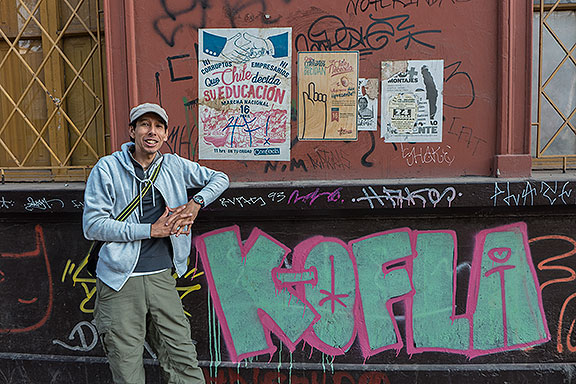 In my first hour in Santiago, Ricardo took me on a lovely walk around the place I was staying. The neighborhood walls are full of graffiti and posters. 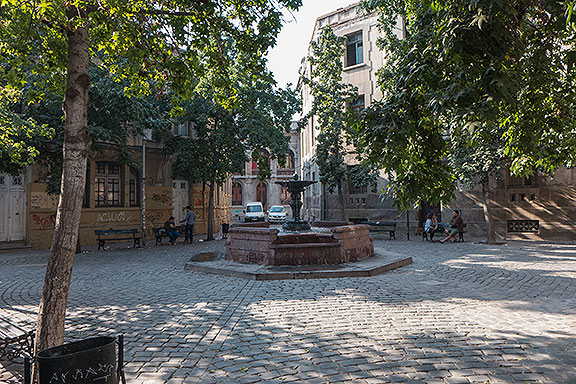 A short walk away was the “Concha y Toro” neighborhood, designed in the 19th century to replicate a cozy Parisian neighborhood. Ricardo had enjoyed several years in the adjacent building when it was abandoned, using it as a Social Center and bike workshop. Continue reading First Time in Santiago, Chile
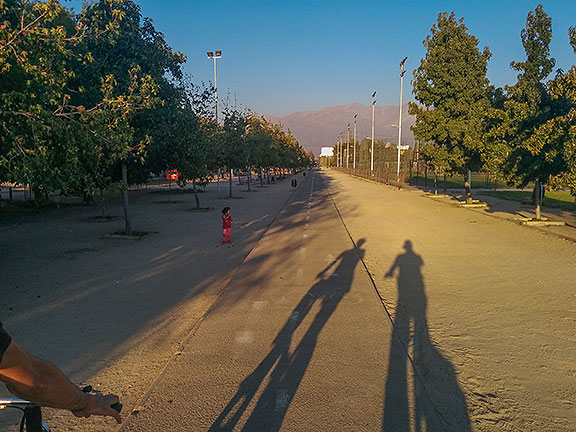 Ricardo Jerez and I bicycling on a path towards his home in Santiago, the Andes looming in the distance. It still is, isn’t it?
It is in some places, less so in others. In Latin America, from Chile and Brazil to Colombia, Panama, Peru, Ecuador, and Mexico, it is going strong. But I had an insight during the two weeks I recently spent in Chile at the Forum Mundial de Bicicleta 5 (#FMB5). Amidst presentations on all matters bicycle-related, from street designs and accessibility, to the important feminist impulse that is pushing many women to use the bicycle as a literal vehicle of personal emancipation (echoing their 19th century ancestors), to countless presentations on urban planning and livable cities, it suddenly dawned on me that we’re living through a very specific period of history. From about 1990-2020 we are transitioning from the twentieth-century commitment to automobiles to a multi-modal approach to urban transportation that foregrounds bicycling and walking, supplemented by public transit.
To be sure there are still strong political and economic forces putting up major resistance to this transition, especially given the central role of the automobile and oil industries in most industrialized economies. But literally millions of citizens across the world are “voting” on this directly by getting on bicycles and changing their daily behavior. This didn’t erupt from a policy decision on-high by some bureaucrat, but rather an urgent need by people in cities everywhere to address the ridiculous irrationality of endless traffic congestion, horrible air pollution, catastrophic collisions, neighborhoods devastated by being engineered to accommodate maximum space for high speed car use and no-speed car parking, perpetual indebtedness to pay for car costs, and so on. As social solidarity has been torn apart in societies everywhere by the horrible consequences of neoliberal capitalism and austerity, a new kind of solidarity around the embrace of the bicycle has helped many to find a remarkably joyful connection to their sister and brother cyclists.
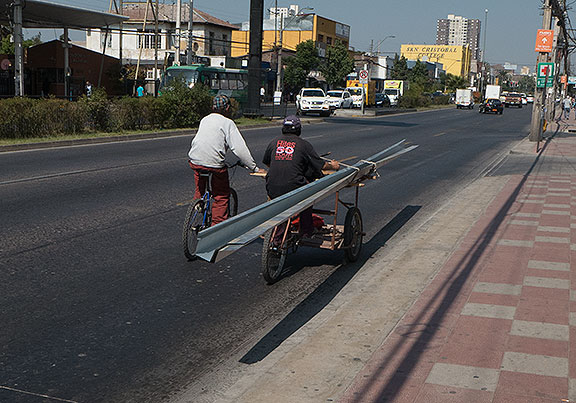 Practical bicycling… the kind that doesn’t really show up in the “bicycling culture” which tends to be a middle- and upper-middle class phenomenon in most places. 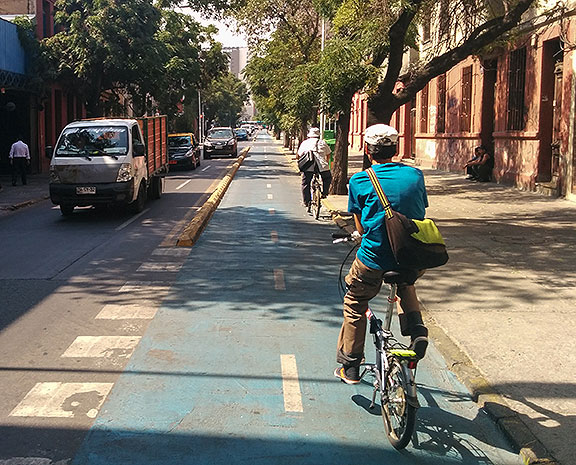 Santiago has some very decent bike lanes already, and some weirdly obsolescent ones… this one on Rosas was my favorite. 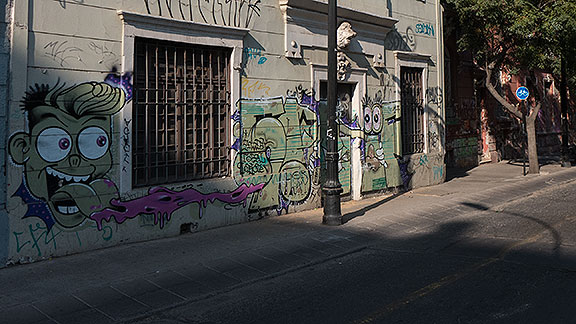 The sloping granite blocks between sidewalk and street are designated a bike-only space! Never saw anything like that before. 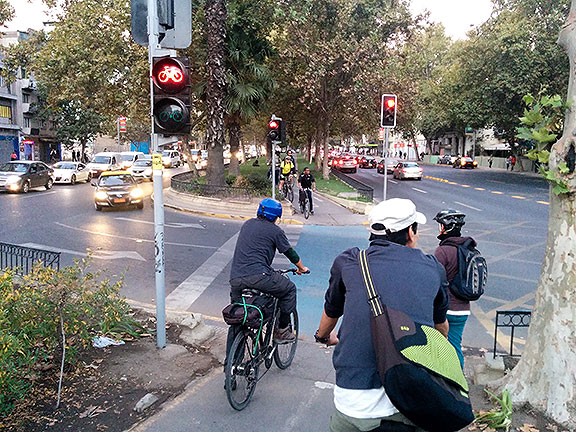 An early bike lane in Santiago runs along the center median of the Alameda, but it is full of obstacles and strange twists and turns… more of an add-on that wasn’t really designed for bicycle traffic. This “bike culture solidarity” is largely a middle- and upper-middle-class phenomenon. Poor people have been bicycling through the whole of the 20th century without making a political or cultural issue of it. Once the bike culture started to catch on during the past generation, it took root among the parts of the population who were perhaps most separated from the kind of everyday solidarity that has always been the hallmark of poorer communities. In places like Mexico, it is still not uncommon to hear people dismiss so-called “backward” small towns as “Pueblos Bicicleteros,” to denote their lack of modernity. But in a delicious turnabout, those towns can now claim to have leapfrogged the stupidity of 20th century modernism to embrace a fully modern 21st century sensibility rooted in a shared and ecologically grounded consciousness, and at ease with self-propelled mobility as a sensible first choice in lieu of oil-and-auto dependency.
Continue reading When Bicycling Was Cool
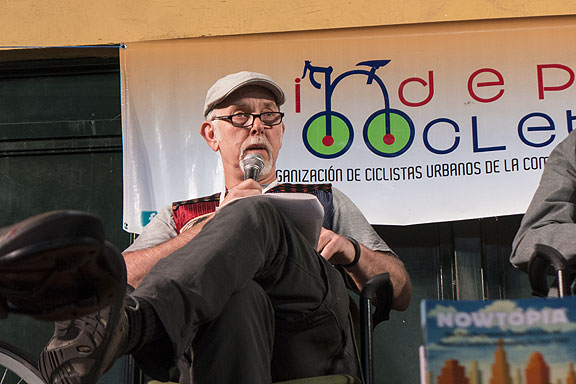 April 3, 2016, giving this talk in Santiago, Chile at the 5th Forum Mundial de Bicicleta We have come together in our shared enthusiasm for bicycling. At one time or another in our lives, each of us came to identify bicycling as the key to social change. Or we concluded it was the key to unraveling the dangerous traffic nightmare plaguing most of the world’s cities, or to reclaiming a more convivial public space from the domination of private cars. Or we connected bicycling to a refusal to participate in oil wars; or a refusal to accept the mountain of debt associated with car and oil dependency; or a refusal of the massive pollution by fossil fuels that is wreaking havoc with the world’s climate.
On a simple level, most of us learned to bicycle when we were children, and quickly discovered that bicycling unlocked nearby streets and neighborhoods, and eventually entire cities that we could reach by riding our bikes. Personal mobility, a freedom to move independently through space, is an intoxicating pleasure and is a right of all humans, or should be.
This freedom of mobility has been thoroughly colonized by the marketing engineers of the automobile industry for more than 100 years. Bicycling lost the argument in the early 20th century, an argument that bicycling itself had started with demands for good roads covered in asphalt in the late 19th century. As cars came to dominate personal transportation, displacing walking, bicycling, and streetcars and having streets widened and reorganized to accommodate faster speeds and more parking, bicycling was redefined as a child’s first vehicle on their way to a mature embrace of the car in adulthood. Most people across the planet have been convinced to accept this, or at least they were until about a generation ago.
Starting in 1992 in San Francisco, Critical Mass emerged as a monthly “organized coincidence” in which first dozens, then hundreds, and eventually thousands of bicyclists took to the streets to “ride home together.” While cars clogging our streets in endless daily traffic jams is treated as inevitable and natural, part of the unavoidable “weather” of city life, dense masses of bicyclists are anomalous, some kind of strange unnatural aberration, an unexpected emergence of rebellious creativity. Though we always said “we aren’t blocking traffic, we ARE traffic!” most participants, bystanders, and motorists understood that this was something more than mere traffic. I like to say it was a Defiant Celebration. We discovered that by bicycling together in a celebratory mass seizure of the roads we were cracking open the closed public space of city streets, reclaiming it from the decades-long enclosure of our thoroughfares by the forces of “motordom” and their successful marginalization of other transit options. We also opened a self-governed space free of commerce, where coming together in conversation and shared activity was a natural experience not requiring permission, licenses, or the purchase of products.
Since that auspicious turn a generation ago, bicycling has returned to the world’s cities in a way no one could have predicted. Picking up enthusiasm from a wide swath of the population, literally hundreds of thousands of people are bicycling every day now instead of driving in cars. This is an amazing outcome of a slowly snowballing collective decision to change life that started small in one place, then spread to other places, and eventually led to millions of people in hundreds of the world’s cities changing their everyday behavior.
Continue reading If Bicycling is the Key, What Does it Unlock?
|
|























